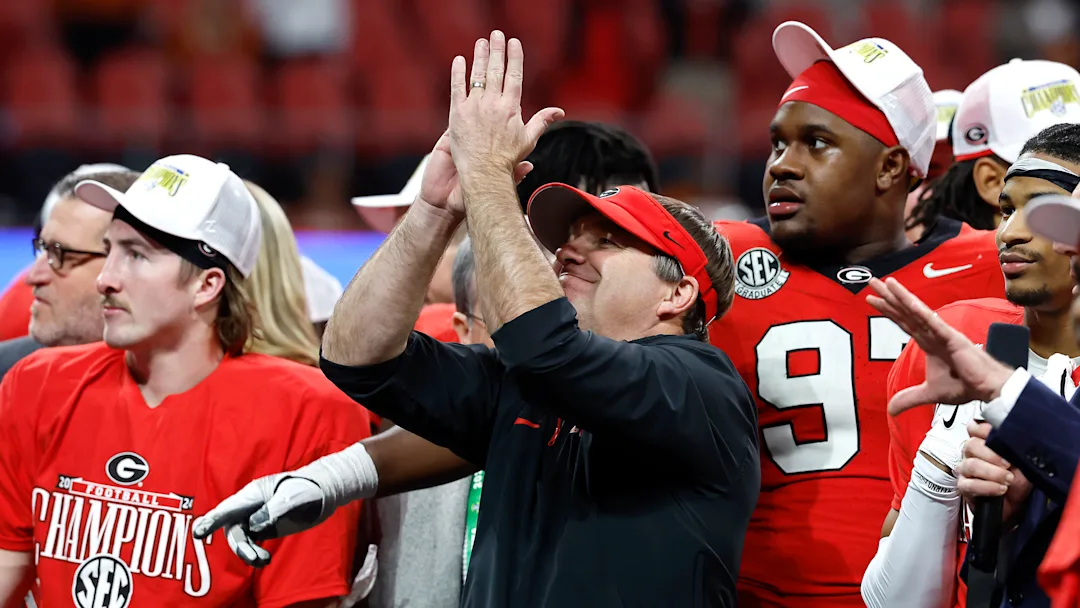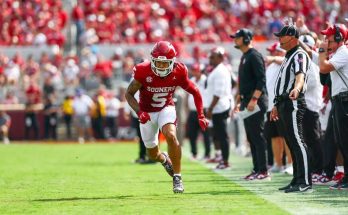Georgia football suffered a significant recruiting blow on Tuesday when five-star offensive tackle Jackson Cantwell committed to the Miami Hurricanes, surprising many who believed the Bulldogs were in the lead heading into decision day. Cantwell, one of the top offensive linemen in the 2025 class, had long been considered a near-lock for Georgia, but in a dramatic twist, the Missouri native opted for the ACC powerhouse instead. It was a tough pill to swallow for Bulldogs fans, especially given the importance of beefing up the offensive line in a competitive SEC environment. But even with that sting fresh in the minds of UGA supporters, the reality is that Jackson Cantwell isn’t so irreplaceable that Georgia’s recruiting efforts are now doomed. In fact, there’s a strong case to be made that while his talent is undeniable, the Bulldogs may end up benefiting long-term by redirecting resources elsewhere.
The recruiting world has shifted dramatically in recent years due to the advent of name, image, and likeness (NIL) deals. Programs across the country are now investing significant resources into wooing top high school talent with lucrative NIL packages. According to multiple reports, Cantwell was believed to be offered as much as \$2 million from Miami to sign with the Hurricanes. That figure, astonishing on its own, was rumored to have grown in the final days of his recruitment. Georgia, for its part, was reportedly in the same neighborhood financially, offering a similar deal in hopes of securing the cornerstone offensive tackle.
But when Cantwell made his decision to head to Coral Gables, it meant more than just a recruiting miss for Georgia—it meant a sudden windfall of unspent NIL money. While it’s easy to focus on the loss, there’s an upside here: Georgia now has a surplus of NIL funds that can be redistributed to support other high-priority recruits. Instead of pouring \$2 million into one player, they now have flexibility and freedom to target multiple impact players across the board.
This strategy was brought into the spotlight by a Georgia fan on social media who suggested using the leftover NIL budget to strengthen efforts for two elite 2026 prospects: tight end Mark Bowman and linebacker Tyler Atkinson. Both are currently rated as the top players at their respective positions, and both have been linked closely to the Bulldogs. Even before Cantwell’s decision, Georgia was considered one of the frontrunners for Bowman and Atkinson. But now, with more financial ammunition, Georgia can solidify its position and ensure it doesn’t miss out on either one.
Mark Bowman is the kind of tight end that programs build offenses around. He’s dynamic, physical, and possesses an NFL-caliber frame and skill set. A Georgia offense that’s built its identity on power, play-action, and versatility at the tight end position would benefit greatly from his services. With the Bulldogs likely to be breaking in a new quarterback in the near future and constantly battling elite SEC defenses, adding a player of Bowman’s caliber would go a long way toward sustaining their offensive success.
On the defensive side, Tyler Atkinson is an absolute game-changer. A hard-hitting linebacker with elite speed and football instincts, Atkinson would fit right into Georgia’s defensive scheme under head coach Kirby Smart and defensive coordinator Glenn Schumann. He’s the kind of player who could be calling the shots for a national title defense before he ever steps foot on campus. By redirecting the NIL package once earmarked for Cantwell into an aggressive pursuit of Atkinson, Georgia might actually improve its future defensive ceiling.
But even beyond those two prospects, Georgia now has an additional \$2 million—or more—at its disposal to play the NIL game however it sees fit. That flexibility is a recruiting director’s dream. It means Georgia can pivot quickly if another five-star comes available late in the cycle. It means the Bulldogs can sweeten the pot for an in-state recruit who’s on the fence. It means they can bolster key position groups with high-upside prospects who might not otherwise consider UGA without a strong NIL package.
There’s also the depth factor to consider. While Cantwell would have been an immediate-impact player and potentially a future NFL first-rounder, Georgia doesn’t lack talent on the offensive line. In fact, the program has recruited that position consistently well for years. The Bulldogs have a strong pipeline of blue-chip linemen in their system, many of whom have waited patiently for their shot at the spotlight. So while missing out on Cantwell does sting, it’s not as if Georgia is now scrambling for answers up front.
The larger picture here is about the evolution of college football recruiting. In the NIL era, roster construction is no longer just about who you land—it’s also about how you manage your financial resources. Programs that adapt quickly and efficiently are the ones who stay at the top. Georgia has already shown it knows how to navigate this new landscape. Losing a recruiting battle to a school that reportedly threw the bag at a top recruit isn’t an indictment of Georgia’s efforts; it’s a reflection of the shifting power dynamics in a sport that’s become increasingly competitive off the field.
It’s also worth remembering that Georgia isn’t in the business of short-term wins. This is a program that’s built for sustained success. Back-to-back national championships, consistent top-three recruiting classes, and a culture that emphasizes development over flash—all of this positions the Bulldogs as one of the top destinations in the country. Cantwell’s decision doesn’t change that. If anything, it reinforces the fact that Georgia can afford to miss on one big fish and still keep the pond stocked.
This isn’t the first time Georgia has missed out on a five-star prospect, and it won’t be the last. That’s simply the nature of recruiting in 2025. But what separates great programs from the rest is how they respond. If Georgia uses the Cantwell money to lock up multiple elite prospects or bolster its depth across several positions, this could turn out to be a blessing in disguise. It’s hard to say that losing a top-five offensive tackle is a “good” thing, but it’s certainly not a disaster when you have the infrastructure and resources that Georgia does.
There’s also a psychological aspect here. By showing recruits and their families that the Bulldogs are willing and able to pivot quickly, they send a message: Georgia isn’t going to be held hostage by any one recruitment. The program is too big, too successful, and too well-run to let one decision derail the bigger picture. That level of confidence is attractive to top recruits, especially those who value winning and development as much as they value NIL opportunities.
In the end, Jackson Cantwell made a personal decision. He saw an opportunity at Miami that made sense for him, both financially and in terms of playing time or coaching fit. That’s fair, and Georgia fans should respect it. But they should also realize that their program is still in a position of strength. The Bulldogs are recruiting at a championship level. They have one of the best coaching staffs in the nation. And now they’ve got a few extra million dollars to play with as they build their next elite class.
So while losing Cantwell might be Georgia’s biggest recruiting loss of the year, it doesn’t have to be a fatal one. In fact, if the Bulldogs are smart—and they’ve shown time and time again that they are—they’ll use this as an opportunity to get even better. The NIL era is all about adaptation, and Georgia is already proving it knows how to play the game. Jackson Cantwell isn’t so horrible to miss after all.



